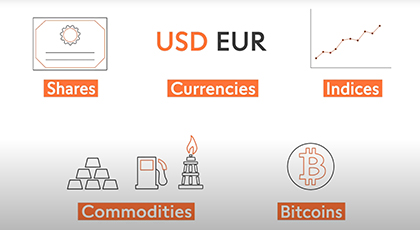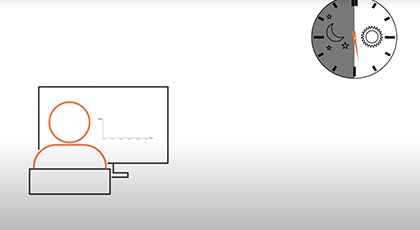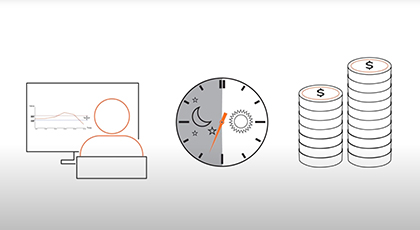2.2 CFD Trading
Get an overview of the practical aspects of CFD trading with concrete examples.
Complete this course
Script
Contracts for Difference, or “CFDs”, exist for many different underlying assets. When you trade Contracts for Difference, you open a position, and if the market moves in the expected direction, you close the position and pocket the difference. If the market price does not move in the expected direction, you can close the position or hold it and hope the market turns in your favor. One of the advantages of CFDs is that you can profit in both rising and falling markets. Say, for example, that you believe the price of the S&P 500 stock index will fall in value. Therefore, you sell contracts based on this index. Your prediction comes true, and you close your position by buying the same number of contracts. The difference is your profit. There are normally no fees associated with intra-day CFD trades. Instead, the broker’s profit is included in the spread, which is the difference between the broker’s buying price and broker’s selling price. However, if you hold open positions at the end of the trading day, they are “rolled forward” and incur fees. These so-called rollover fees are the cost of holding your position overnight. The cost depends on the underlying asset and the direction of the trade. These fees are the reason CFDs are usually unsuitable for buy and hold strategies. There is also a risk that the market may move between closing and opening the next day. Therefore, you should close your positions intra-day or ensure that you have enough funds in your account to cover fees and any loss that may occur. This is especially true if you are trading on margin, which increases both profits and losses.



